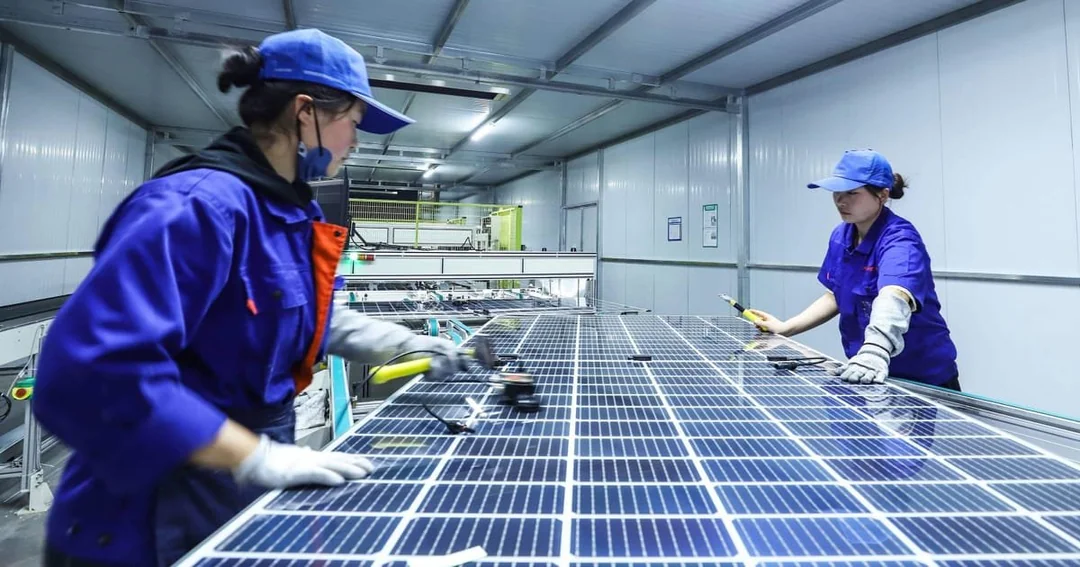The state of Uttar Pradesh (UP) is aggressively pushing to expand its solar energy footprint. With large land availability, rising electricity demand, and a supportive policy environment, the UP government has laid out a clear roadmap in its Solar Energy Policy 2022 to accelerate solar generation, rooftop installation,s and investment in the solar sector.
Policy Targets & Scope:
• The policy aims to add 22,000 MW (22 GW) of solar power capacity by 2026-27.
○ Of this, about 14,000 MW is targeted from utility-scale solar parks/projects.
○ The remaining ~8,000 MW from rooftop and distributed solar: e.g., 4,500 MW residential rooftop, 1,500 MW non-residential rooftop, 2,000 MW under PM-KUSUM/sector C1 and C2.
• Development of solar parks, green energy corridors (e.g., in the Bundelkhand region), and “solar cities” (model cities with high solar uptake).
Key Provisions & Features:
Here are some of the major features of the policy:
• Land & Lease Incentives:
○ A land bank is to be created by the nodal agency, to provide land on lease at a nominal rate: e.g., for state/central agencies; for private players at ~₹15,000/acre/year for 30 years.
○ Stamp Duty: 100 % exemption of stamp duty on land used for a solar power plant/solar park.
• Electricity Duty: 100 % exemption from electricity duty for a period of up to 10 years for solar plants.
• Net-metering / Banking / Wheeling: Rooftop solar systems are supported; energy banking is being introduced; third-party sales/captive consumption are allowed.
• “Solar Cities” program: e.g., the city of Ayodhya is designated as a model solar city; further, 16 Municipal Corporations & Noida to be developed as solar cities.
• Agriculture & Tube-Wells: Solarisation of segregated feeders, grid-connected private tube-wells is explicitly included.
• Storage Incentives: Utility-scale solar systems with 4-hour battery storage are encouraged; a state subsidy (e.g., INR 2.5 crore/MW for such systems) has been announced.
Incentives & Subsidies:
• For residential rooftop solar: In combination with Central Govt assistance (under MNRE’s rooftop solar program), the state offers a subsidy of ₹15,000 per kW (up to ₹30,000 per consumer).
• For large-scale/utility projects: Apart from land and duty exemptions, a subsidy to the tune of ₹2.5 crore per MW (for solar + 4-hour storage) is offered.
• For farmer/tube-well solar systems: For on-grid private pumps, subsidy of 70% for SC/tribal (Musahar, Van-Tangia) farmers, 60% for other farmers (under KUSUM C2).
Targets & Deployment So Far:
• As of one report, UP had achieved ~1,066 MW of rooftop solar capacity (as part of the total target), and several government buildings (~290 MW) have been solarised.
• The state is pushing for the creation of large solar parks; for example being the green energy corridor in the Bundelkhand region (4,000 MW capacity set aside).
What It Means for Stakeholders:
• Homeowners: With the subsidies + net-metering + city-solar program, residential customers in UP have favorable conditions to adopt rooftop solar.
• Businesses & Industries: Open access, captive consumption, third-party sales are permitted, plus land and duty incentives for solar parks.
• Farmers/Agriculture Sector: Solarising tube-wells and feeders brings opportunity for cost-reduction and income generation.
• Developers & Investors: Clear policy targets (22 GW), land incentives, financial support, and state backing make UP an attractive investment destination for solar.
Challenges & Things to Keep in Mind:
• While the targets are ambitious, some reports say that the state has achieved only ~23% of its target by December 2022.
• Land acquisition, grid connectivity, and evacuation infrastructure remain constraints (especially in utility-scale projects).
• Implementation timelines and subsidy disbursement must be monitored carefully.
• For residential systems, consumer awareness, vendor quality, and roof suitability play key roles.
Conclusion:
The Solar Energy Policy 2022 is poised to transform Uttar Pradesh’s energy landscape. As rooftop adoption grows, solar parks expand, and storage becomes integrated, the state could become a major solar-power hub. Enhancements in grid infrastructure, streamlined clearances, and stronger institutional support will be critical to staying on track.




